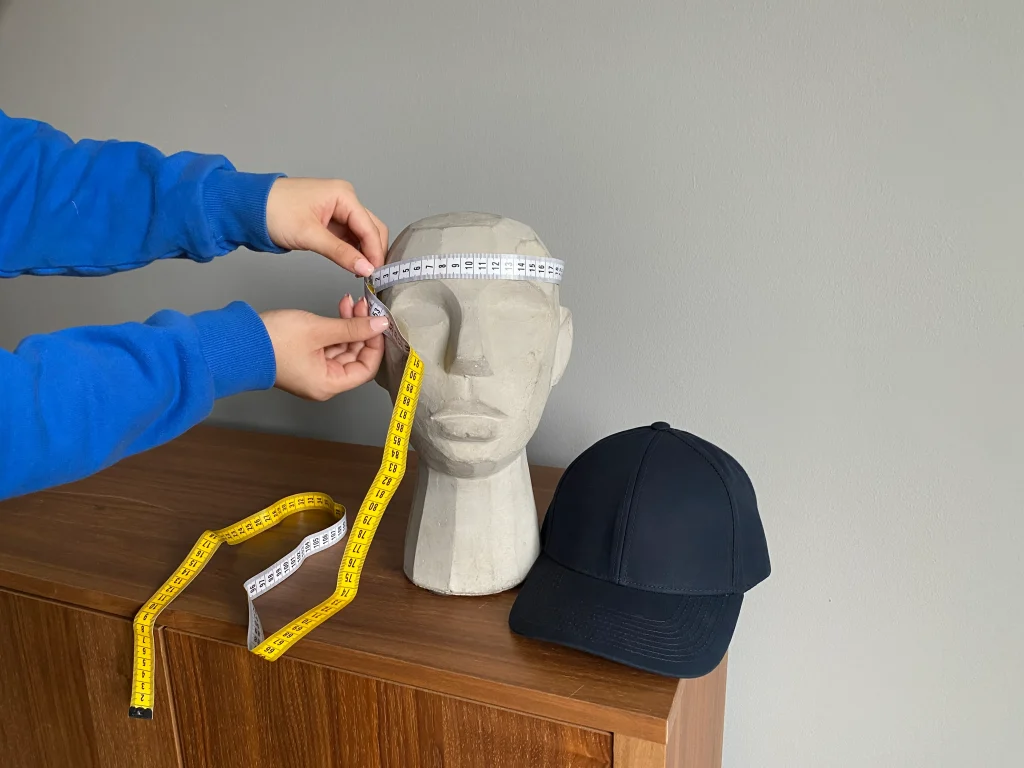Blog
How to Measure Your Head for the Perfect Hat Fit
Finding the perfect hat that fits just right is essential for both comfort and style. A hat that’s too tight can cause discomfort, while one that’s too loose may keep slipping off. To achieve the ideal fit, knowing how to measure your head correctly is key. Whether you’re shopping for a fedora, baseball cap, beanie, or any other style, this guide will walk you through the steps to measure your head for the perfect hat fit.
Why Proper Hat Fit Matters
Before diving into how to measure your head, it’s important to understand why the right fit is so crucial:
- Comfort: A hat that fits well won’t cause headaches or pressure points. It will sit comfortably on your head without causing discomfort, even after hours of wear.
- Style: A hat that fits properly enhances your overall appearance. Too tight or too loose, and it can throw off your look.
- Function: A well-fitting hat offers practical benefits, like staying securely on your head during outdoor activities, protecting you from the sun, or keeping you warm in the cold.
Now, let’s explore how to measure your head to ensure you get the perfect fit every time.

1. Gather the Right Tools
To measure your head accurately, you will need a few simple tools:
- Flexible measuring tape: This is the most accurate tool for measuring your head. If you don’t have a soft measuring tape, you can use a string and then measure it with a ruler.
- Mirror (optional): A mirror will help you see where you’re positioning the tape for a more accurate measurement.
- Pen and paper: To jot down your measurements so you can compare them to hat size charts.
2. Find the Correct Measuring Position
The key to getting the best hat fit is measuring the circumference of your head at the right place. Here’s how to do it:
- Position the tape just above your ears: Start by placing the tape around the fullest part of your head, which is usually just above your ears and eyebrows. This is where most hats sit, and measuring here ensures the hat will fit comfortably without being too tight or too loose.
- Keep the tape snug but not tight: The tape should be snug against your skin, but it should not compress your scalp. You want it to rest comfortably around your head without leaving marks or making it difficult to breathe.
- Keep the tape level: Make sure the measuring tape is straight and level all the way around your head. If it’s tilted, you might end up with an inaccurate measurement.
3. Measure Your Head
Now that the tape is positioned correctly, it’s time to take the measurement. Here’s how to do it:
- Wrap the tape around your head: With the tape securely in place, wrap it all the way around your head. Be sure to keep the tape flat and avoid any twists or turns.
- Record the measurement: Once the tape is in place, read the measurement at the point where the tape meets. This number represents the circumference of your head. If you’re using a string, mark the point where it overlaps and then measure the length with a ruler.
4. Check Your Measurement Against Hat Size Charts
Once you have your head measurement, the next step is to compare it with the hat size chart provided by the brand or retailer you’re buying from. Hat sizes typically come in two formats: numerical (inches or centimeters) or standard (S, M, L, XL). Here’s a general guide to help you translate your measurement:
Standard Hat Sizes (based on head circumference in inches):
- Small (S): 21 ¼” – 21 ⅝” (54 – 55 cm)
- Medium (M): 22″ – 22 ⅜” (56 – 57 cm)
- Large (L): 22 ¾” – 23 ⅛” (58 – 59 cm)
- X-Large (XL): 23 ½” – 23 ⅞” (60 – 61 cm)
Numerical Hat Sizes:
- 6 ¾: 21 ¼” (54 cm)
- 6 ⅞: 21 ⅝” (55 cm)
- 7: 22″ (56 cm)
- 7 ⅛: 22 ¼” (57 cm)
- 7 ½: 22 ¾” (58 cm)
- 7 ⅝: 23″ (59 cm)
- 8: 23 ½” (60 cm)
These charts may vary slightly depending on the hat brand, so always refer to the specific brand’s size guide when available.
5. Consider the Hat Style
Different styles of hats may fit slightly differently, so it’s important to take this into account:
- Baseball caps: These often have adjustable straps, so the exact measurement may not be as crucial. However, you still want the cap to sit comfortably on your head, and knowing your head circumference will ensure it’s not too tight or too loose.
- Fedoras, trilbies, and other structured hats: These hats have a more rigid shape and are sized based on head circumference. You’ll want to follow the measuring and size chart process carefully to find your perfect fit.
- Beanies and knit hats: Beanies are generally more flexible and can stretch to fit most head sizes. However, it’s still useful to know your measurements to ensure a comfortable, snug fit.
- Wide-brimmed hats: These hats often have adjustable bands or straps to help with sizing. Be sure to consider the circumference as well as the depth of the hat to make sure it fits properly around your head.
6. Check the Fit
Once you’ve selected your hat and received it, try it on to check for the perfect fit. Here’s what to look for:
- Comfort: The hat should sit comfortably without feeling too tight or pinching your head. If it’s too tight, it may cause discomfort or leave marks on your skin. If it’s too loose, it might fall off easily.
- Positioning: The hat should sit comfortably just above your ears and eyebrows. If it sits too high on your head, it may feel unstable; too low, and it may obstruct your vision.
- Secure Fit: For hats with adjustable bands (like baseball caps), adjust the band until it fits snugly around your head. For hats without adjustable bands, ensure that the hat stays on your head when you move, but isn’t uncomfortably tight.
7. Adjustments for a Better Fit
If you find that your hat is slightly too loose or tight, don’t worry! There are a few adjustments you can make:
- For a tight hat: Some hats come with a built-in sweatband that can be removed or replaced for extra room. Alternatively, you can stretch the material of a fabric hat gently, but be careful not to damage the fibers.
- For a loose hat: For hats that are slightly too big, you can use hat sizing tape (available online) or padding inside the crown to adjust the fit. You can also try adding a hatband or securing it with an adjustable strap if it has one.

Conclusion
Measuring your head for the perfect hat fit is easy and straightforward. By following these steps and taking the time to measure your head accurately, you can ensure that your hat fits comfortably and looks great. Whether you’re shopping for a winter beanie or a summer fedora, knowing your head circumference and comparing it with size charts will help you make a confident, informed purchase. A properly fitting hat not only enhances your comfort but also boosts your overall style, making it a key accessory in your wardrobe.


